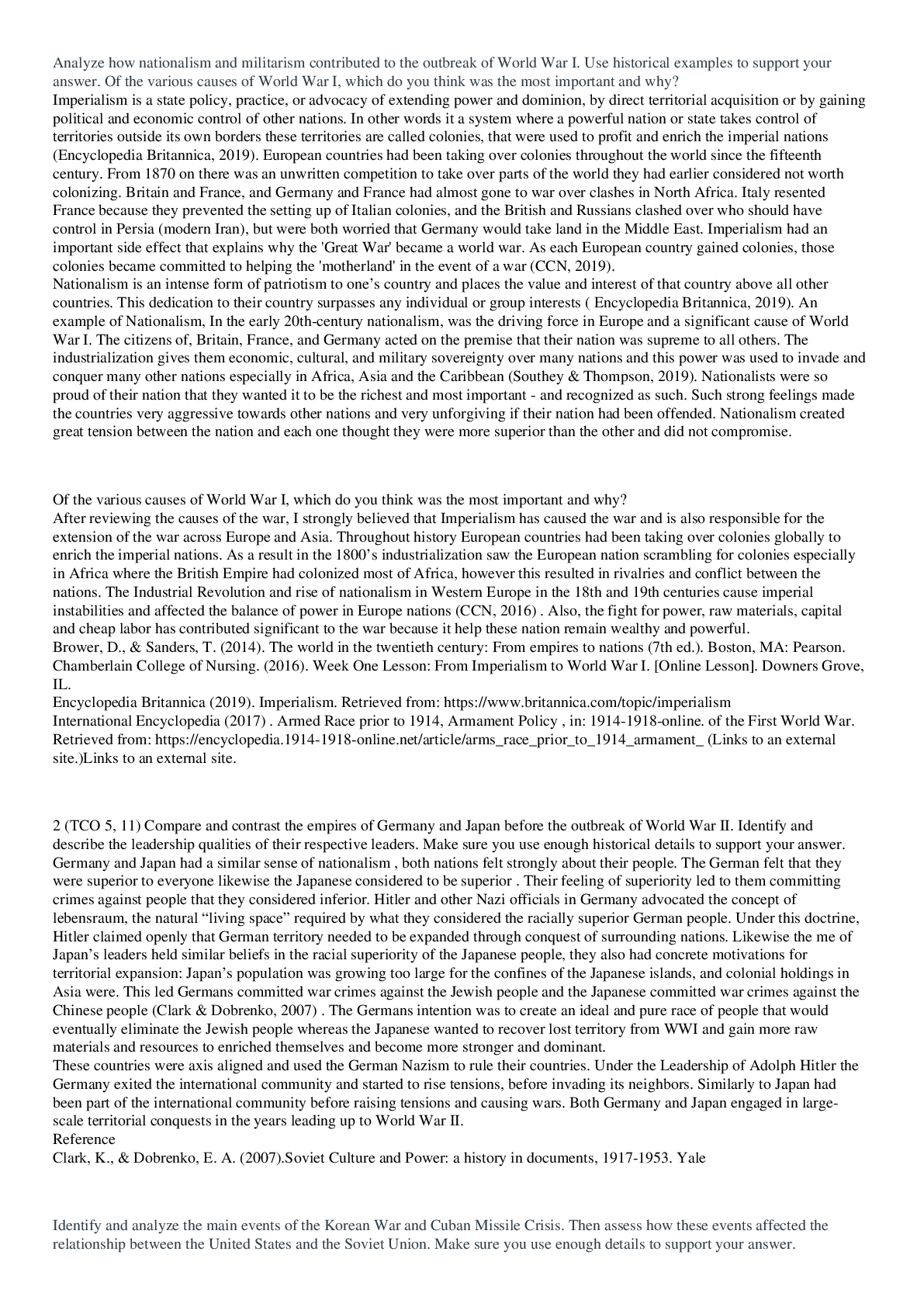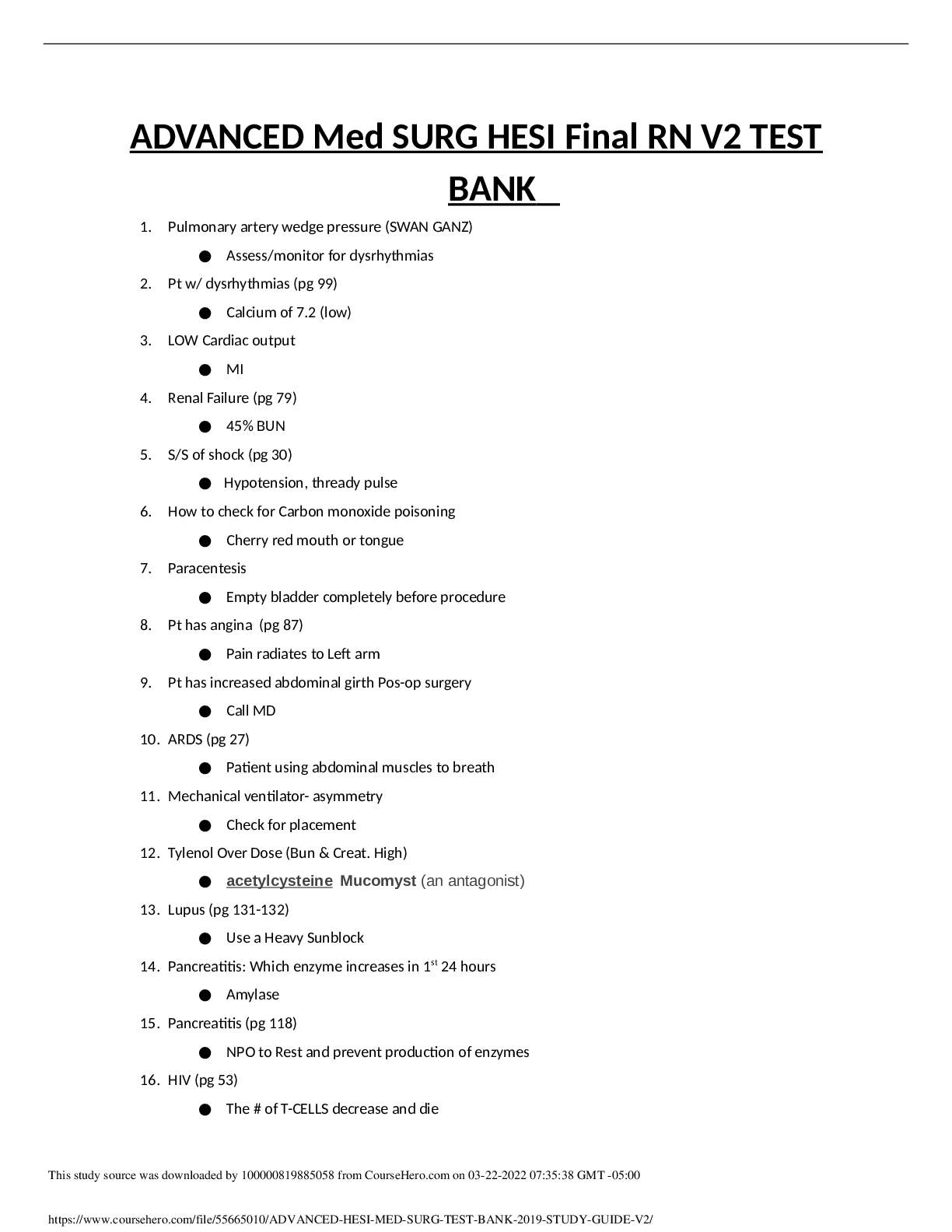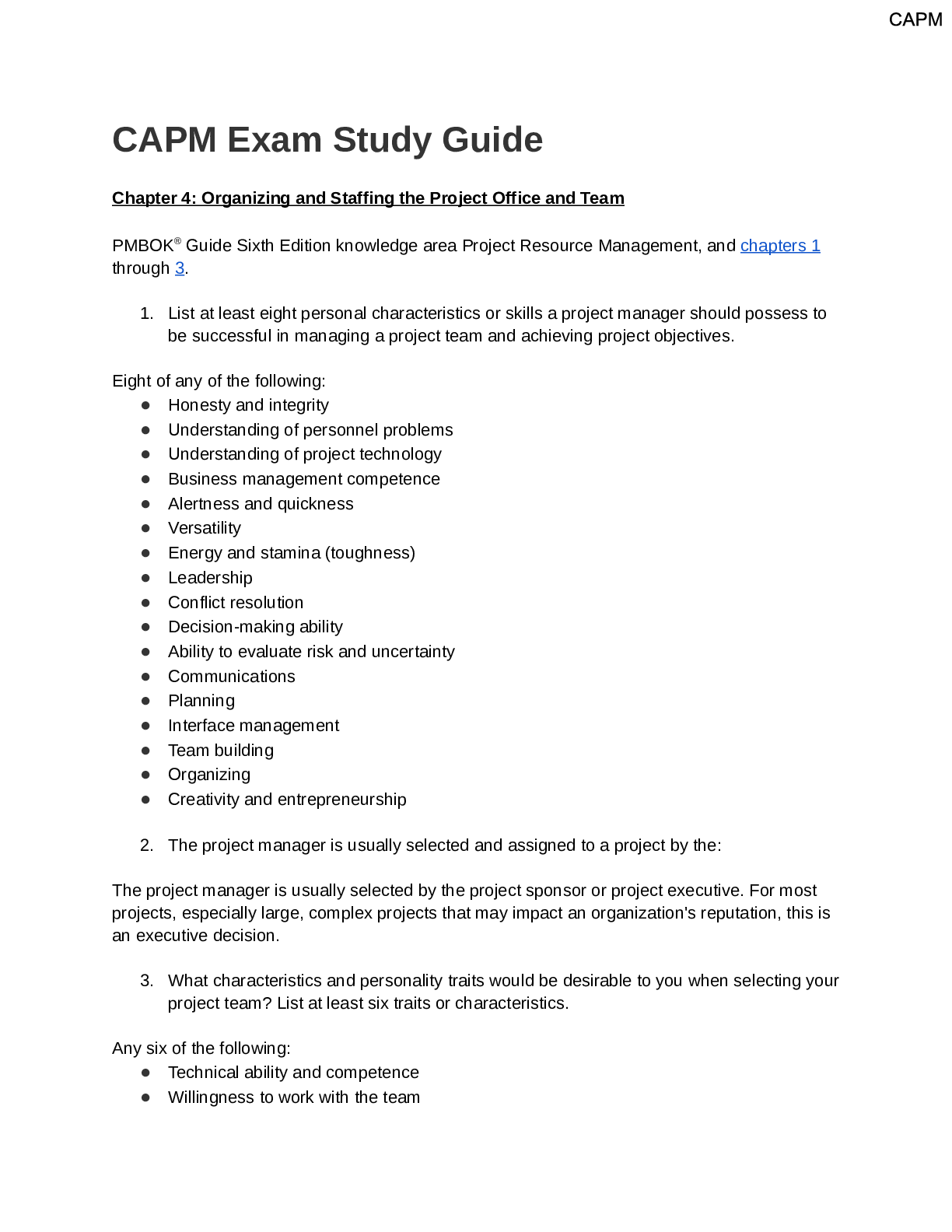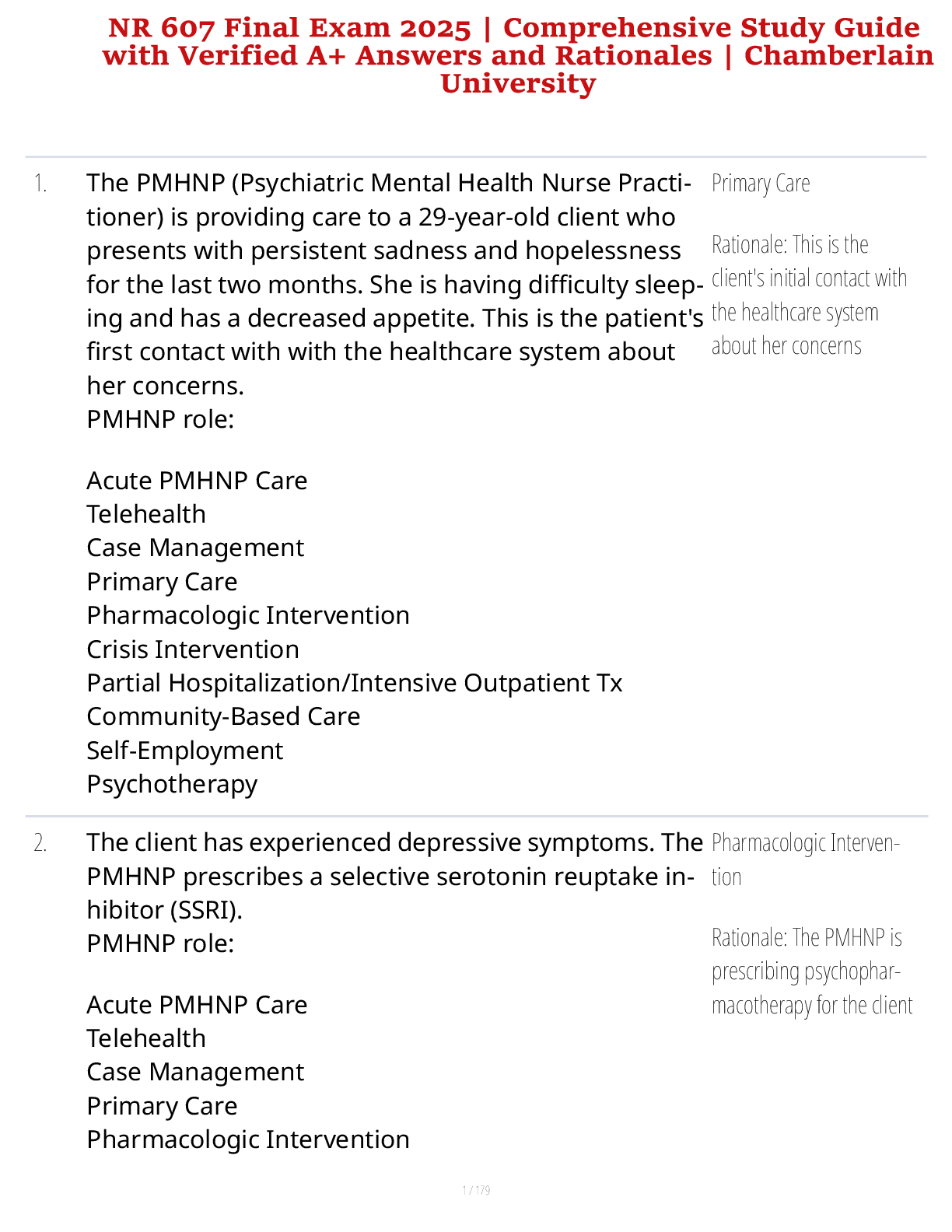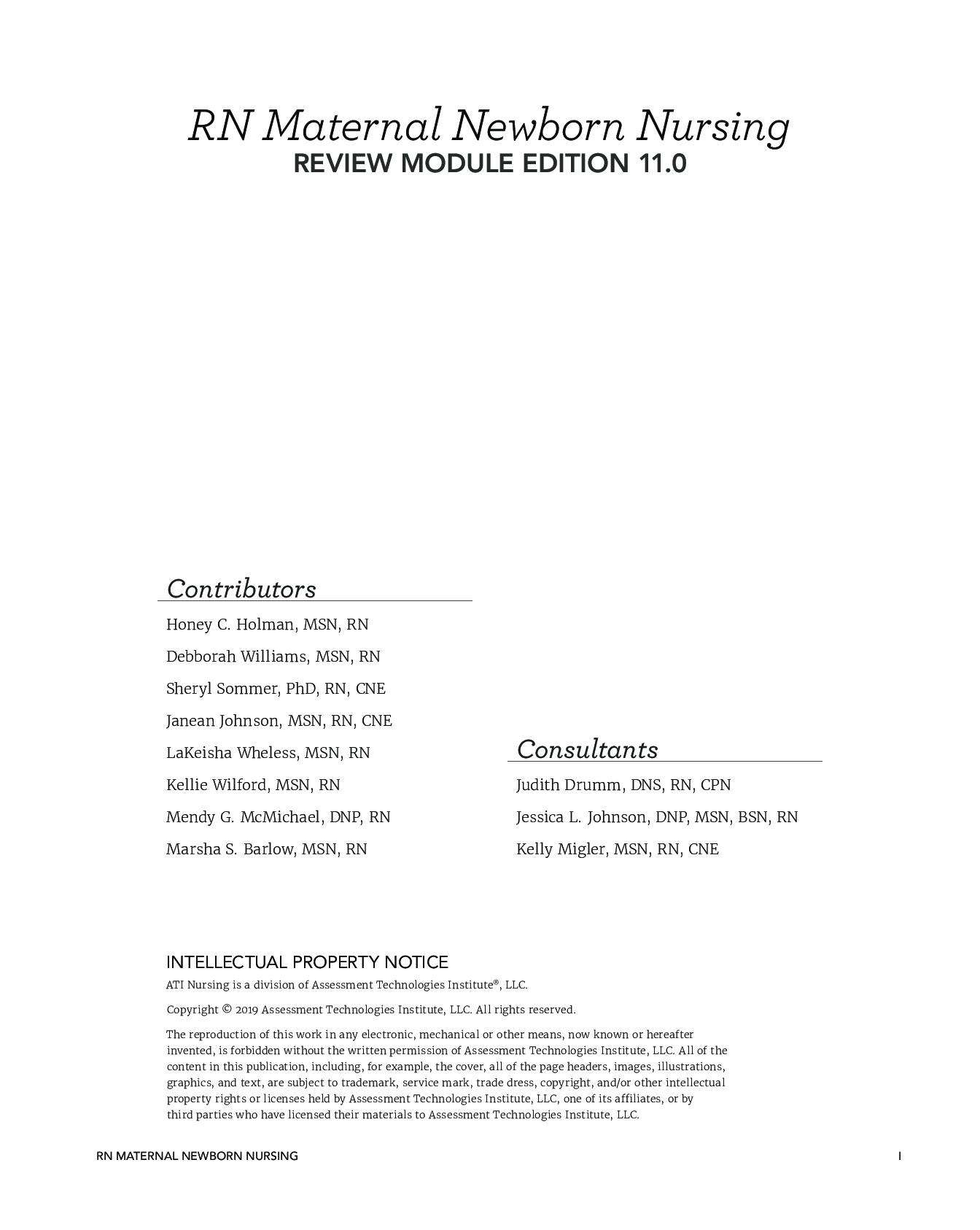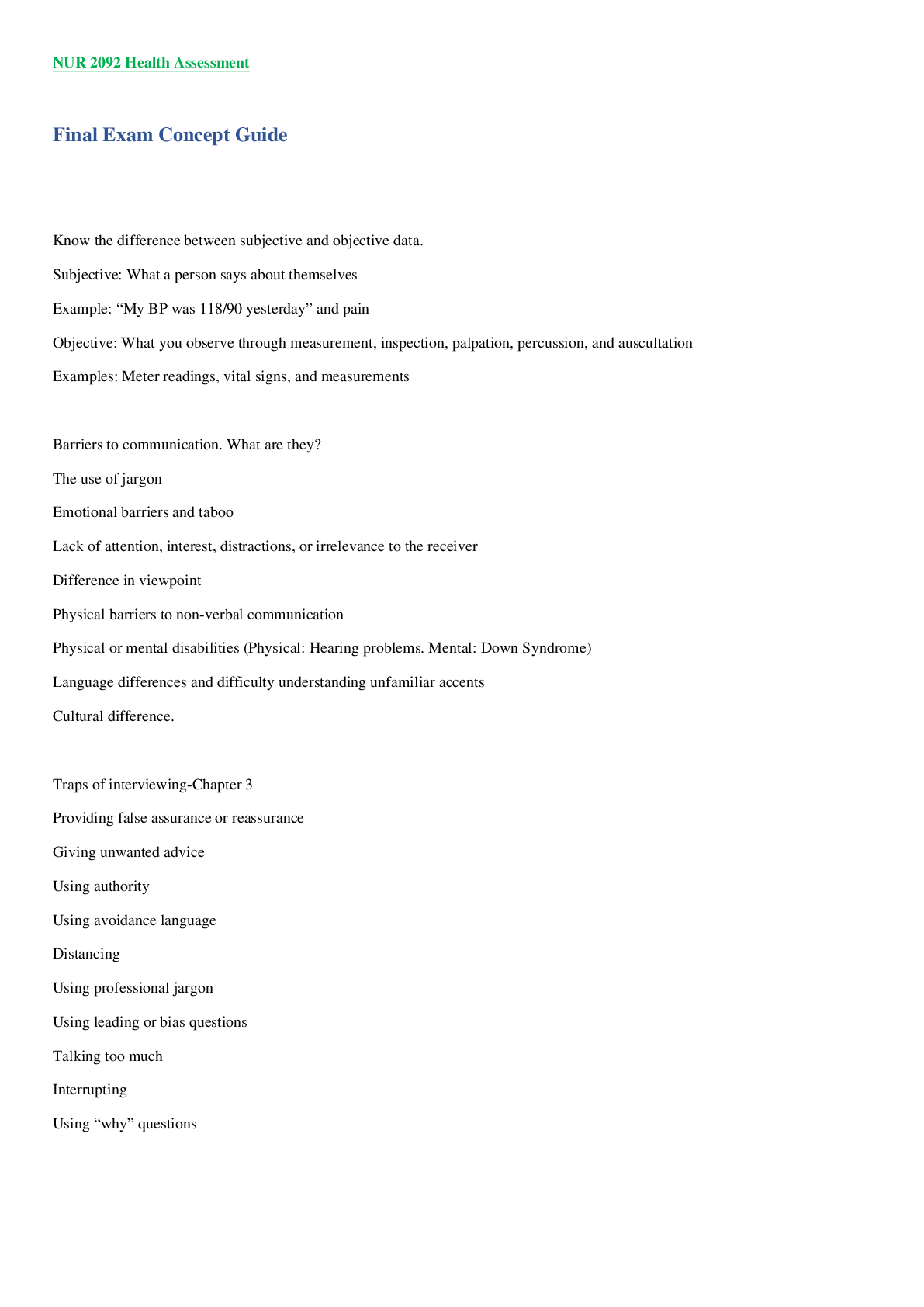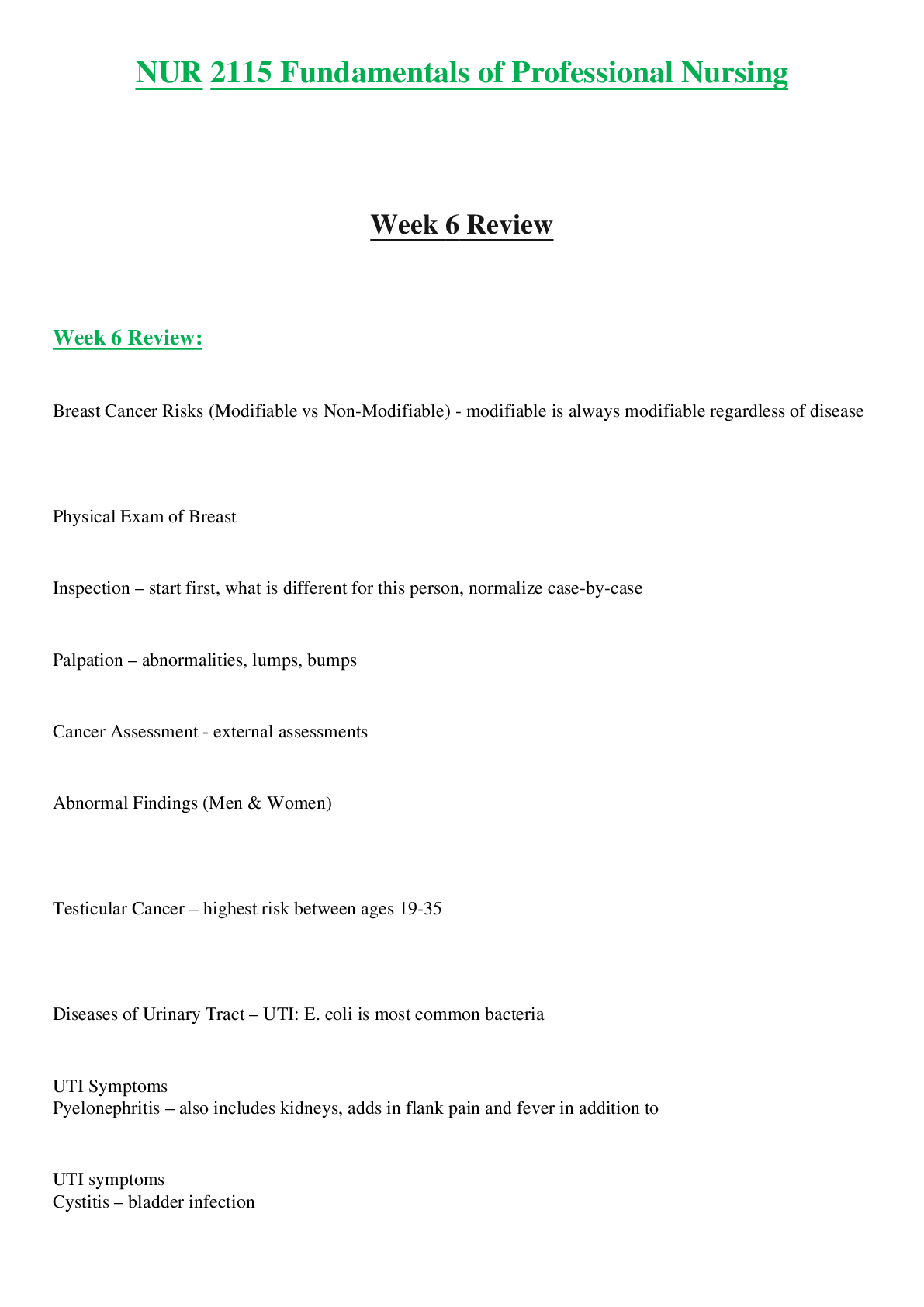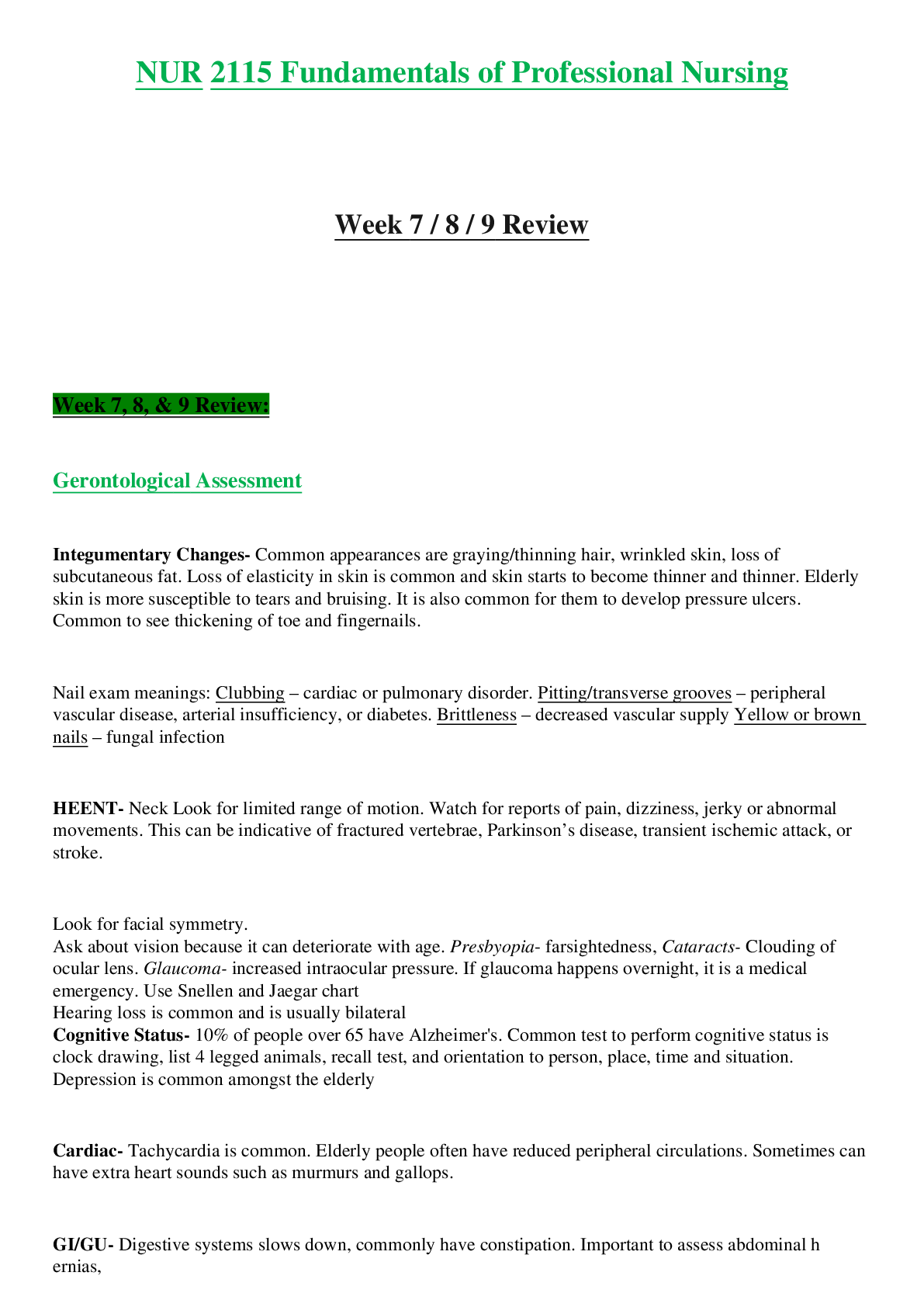Applied Decision Methods for Business
Document Content and Description Below
Course Description:
This course explores the use of applied quantitative techniques to aid in business-oriented decision making. Emphasis is on problem identification and formulation with application
...
of solution techniques and the interpretation of results. Included are probability theory; decision making under certainty, risk and uncertainty; utility theory; forecasting; inventory control; PERT/CPM; queuing theory; and linear programming.
Prerequisite:
MAT 201
Textbook:
Saint Leo University. (2013), Quantitative analysis custom. Boston, MA: Pearson Learning Solutions.
ISBN: 978-1-269-23601-0.
Software
The use of statistical software is a required component in this course. It is expected that you already have a basic understanding of computers and Microsoft Excel. In-depth training is provided during the course on the appropriate use of the following packages:
• TreePlan-Student-179 Excel Add In
• Excel QM, version 4
• POM QM, version 4
• Analysis Tool Pack for Microsoft Excel must be activated
To access the information needed to install the software, click the Software Installation Information link located under Resources in the course menu.
Learning Outcomes:
At the completion of the course you should be familiar with several decision methods of decision-making in a business environment. You will find that almost every type of problem to which you will be exposed in the business world has been explored and methods of solving them have been devised. You should be able to apply these methods to the real-world situations in which you will one day find yourself. The skills developed during this class include:
1. Explain the key attributes and differences between the normal, standard normal, and binomial distribution of variables.
2. Identify and explain the underlying assumptions, key variables, theoretical basis, and solution techniques for the following decision-making problems:
a. Decision Analysis
b. Probability Theory and Analysis
c. Regression Analysis
d. Forecasting Methods
e. Inventory Control Methods
f. Project Management (including PERT/CPM)
g. Network Models
h. Queuing Theory
i. Linear Programming Approaches and the Transportation and Assignment Special Cases
j. Statistical Process Control
3. Formulate and execute a solution to a variety of decision-making problems using computer software.
4. Identify, explain, and interpret the key areas of computer output for the various decision-making problems.
5. Apply one of the approaches covered in class to a real-world issue and present the findings.
6. VALUES OUTCOME: Demonstrate the core value of excellence by adequately preparing for each class session, actively participating in class, and completing all required assignments.
The focus of this course will not be on the development of the mathematical models used to analyze data. Instead the focus will be on the application and use of statistical methods. Each of the above outcomes will be accomplished through an examination of the following areas:
• What is the methodology? What questions does it answer?
• Define the problem. Develop the model. Determine what data is necessary.
• How do we analyze the data?
• What do the results look like?
• How do we interpret the results; i.e., what do the results mean?
Core Value:
The Management Department has identified excellence as the Saint Leo University core value of focus in this course.
Excellence: Saint Leo University is an educational enterprise. All of us, individually and collectively, work hard to ensure that our students develop the character, learn the skills, and assimilate the knowledge essential to become morally responsible leaders. The success of our University depends upon a conscientious commitment to our mission, vision, and goals.
Evaluation:
Grades in this course will be based on the following:
Assignment Points Weight
Discussions (8 at 25 points each) 200 20%
Application Assignments (8 containing 28 total
problems worth 10 points each) 280 28%
Quizzes (4 at 30 points each) 120 12%
Exams (2 at 100 points each) 200 20%
Group Project 200 20%
Total 1,000 100%
Discussions (20%):
Discussion question responses are made in the Discussion Board for the appropriate module. To earn full credit, students must answer the question and make a proper citation for a reference which supports the answer. The instructor will not be grading on “volume,” but will instead be looking for discussions that answer the question and give a good description of all of the factors involved in arriving at that answer. A student asked to give an example from experience and has no relevant experience in that topic, should state he/she has no experience and then propose an example that he/she believes would be appropriate in answering the question. Review the guidelines posted for discussion question responses. Participation is integral to the discussion grade; this aspect will be graded based on your participation in the Discussion Board. As a general rule, each student is required to post thoughtful responses to at least two other students. In these responses, simply agreeing or disagreeing is unacceptable; students must also state the reason(s) for agreement or disagreement with the post. References that support the reasoning in the responses are also required.
[Show More]
Last updated: 3 years ago
Preview 1 out of 7 pages




.png)

